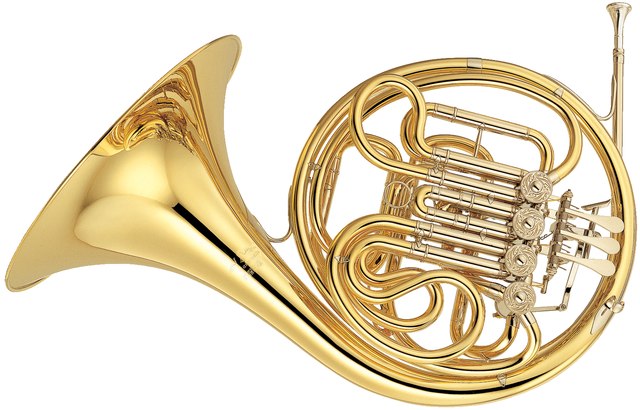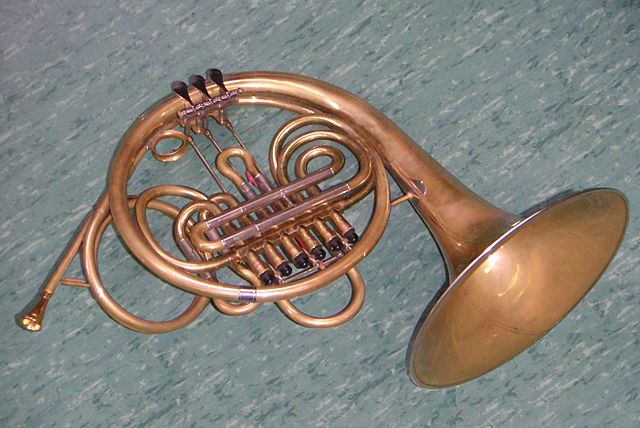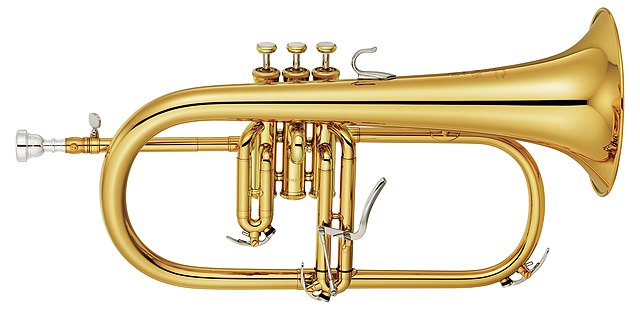The French horn is a brass instrument made of tubing wrapped into a coil with a flared bell. The double horn in F/B♭ is the horn most often used by players in professional orchestras and bands, although the descant and triple horn have become increasingly popular. A musician who plays a horn is known as a horn player or hornist.
A modern double horn
The valves of a Conn 6D double horn. The three lever keys (above the large valves) can be depressed toward the large outer tube. The thumb key (near the left-most valve) moves inward toward the three finger keys.
A natural horn has no valves, but can be tuned to a different key by inserting different tubing, as during a rest period.
Vienna horn
A brass instrument is a musical instrument that produces sound by sympathetic vibration of air in a tubular resonator in sympathy with the vibration of the player's lips. Brass instruments are also called labrosones or labrophones, from Latin and Greek elements meaning 'lip' and 'sound'.
Six high brass instruments Left, from top: A reproduction baroque trumpet in D, a modern trumpet in B♭, a modern trumpet in D, a piccolo trumpet in B♭ (octave higher), and a flugelhorn in B♭. Right: a cornet in B♭.
A tenor horn (alto horn) in E♭, baritone horn in B♭, and euphonium in B♭
Brass instrument piston valves
Flugelhorn with three pistons and a trigger








